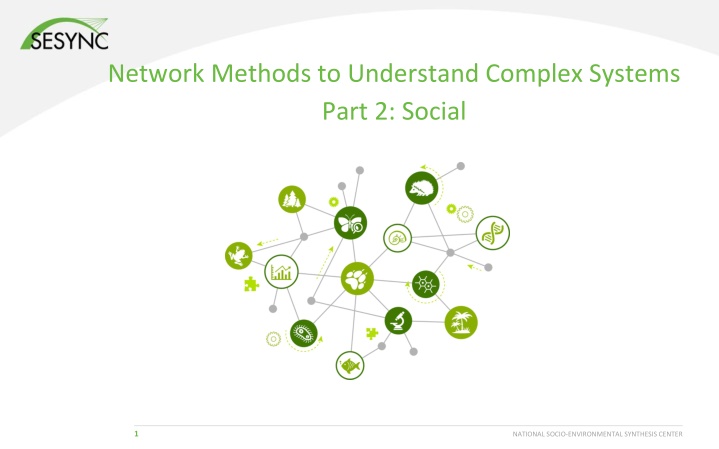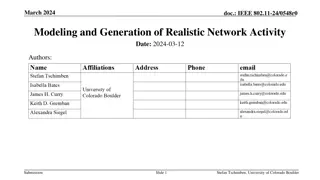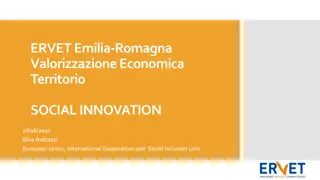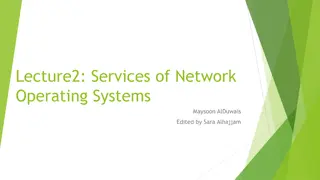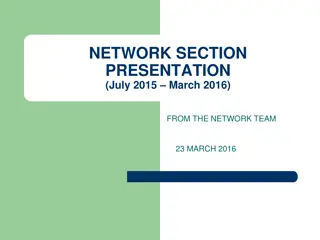Network Methods for Social Systems Understanding
In social systems, network centrality metrics play a crucial role in identifying influential actors. These metrics, such as node degree, closeness centrality, and betweenness centrality, help characterize different aspects of a node's position in a network. By assessing an actor's influence based on factors like the number of relationships, speed of influence, and ability to connect others, researchers can determine the most influential actors in a given network. This analysis is essential for understanding complex social systems and their dynamics.
Download Presentation

Please find below an Image/Link to download the presentation.
The content on the website is provided AS IS for your information and personal use only. It may not be sold, licensed, or shared on other websites without obtaining consent from the author.If you encounter any issues during the download, it is possible that the publisher has removed the file from their server.
You are allowed to download the files provided on this website for personal or commercial use, subject to the condition that they are used lawfully. All files are the property of their respective owners.
The content on the website is provided AS IS for your information and personal use only. It may not be sold, licensed, or shared on other websites without obtaining consent from the author.
E N D
Presentation Transcript
Network Methods to Understand Complex Systems Part 2: Social 1 NATIONAL SOCIO-ENVIRONMENTAL SYNTHESIS CENTER
2 NATIONAL SOCIO-ENVIRONMENTAL SYNTHESIS CENTER
Network Centrality metrics what are they and why are they useful? characterize aspects of a node s positions in a network useful in identifying most influential actor* (node) *actor = person, institution, group How is an actor s influence in a network assessed? 1. Number of relationships? 2. Speed of influence? 3. Ability to connect others? There s a centrality metric for each 3 NATIONAL SOCIO-ENVIRONMENTAL SYNTHESIS CENTER
Centrality metrics node degree closeness betweenness node linked to the most other nodes (reflects # of relationships) has shortest average mean distance to all other nodes (reflects ability to influence others quickly ) falls on the shortest paths the most times (reflects bridging btw parts of network) 4 NATIONAL SOCIO-ENVIRONMENTAL SYNTHESIS CENTER
Node degree 11 7 8 6 9 15 12 10 4 5 5 16 17 14 3 13 19 18 2 1 5 NATIONAL SOCIO-ENVIRONMENTAL SYNTHESIS CENTER
Closeness centrality 11 7 8 6 9 15 12 10 10 4 5 16 17 14 3 13 19 18 2 1 6 NATIONAL SOCIO-ENVIRONMENTAL SYNTHESIS CENTER
Betweenness centrality 11 7 8 6 9 15 12 12 10 4 5 16 17 14 3 13 19 18 2 1 7 NATIONAL SOCIO-ENVIRONMENTAL SYNTHESIS CENTER
Aniak food sharing network Source: Figure 2 from Scaggs et al. 2021. Linking subsistence harvest diversity and productivity to adaptive capacity in an Alaskan food sharing network. DOI: 10.1002/ajhb.23573 8 NATIONAL SOCIO-ENVIRONMENTAL SYNTHESIS CENTER
